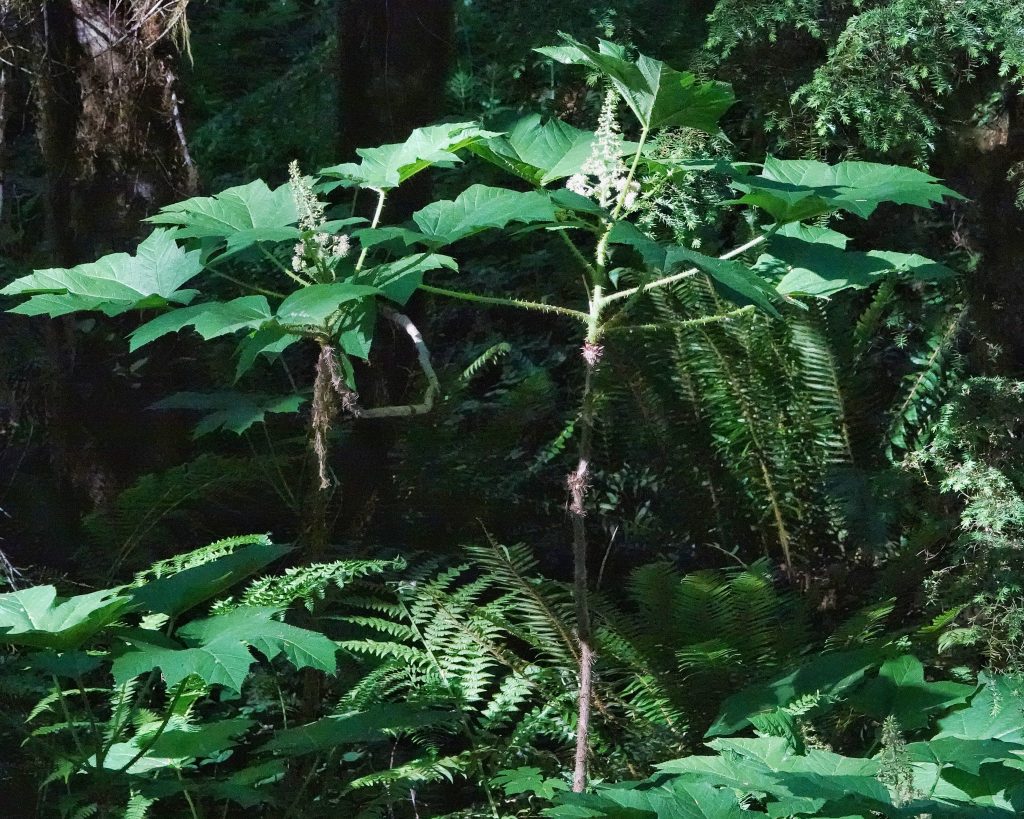
Like Ulex europaeus (Gorse) and Rubus bifrons (Himalayan Blackberry), Oplopanax horridus (devil’s club) is one of nature’s ’Keep Out’ signs. As Tom Heutte eloquently stated on his entry to the Forest Service’s Plant of the Week site for Devil’s Club. ; “A term of botanical literature from the glossary: “armed” meaning protected with spines, prickles, or stinging hairs. Devil’s club is armed to the teeth. The spines of devil’s club coat every exposed surface of the plant except for the roots and berries. It is notable in that even the leaves are covered with numerous spines, and on the stem, the spines are so densely crowded, they seem to compete for space with each other.” It is such an effective barrier to pedestrian travel that some park officials and gardeners have recruited this plant to keep wandering hikers and other visitors out of sensitive, or dangerous, environments.
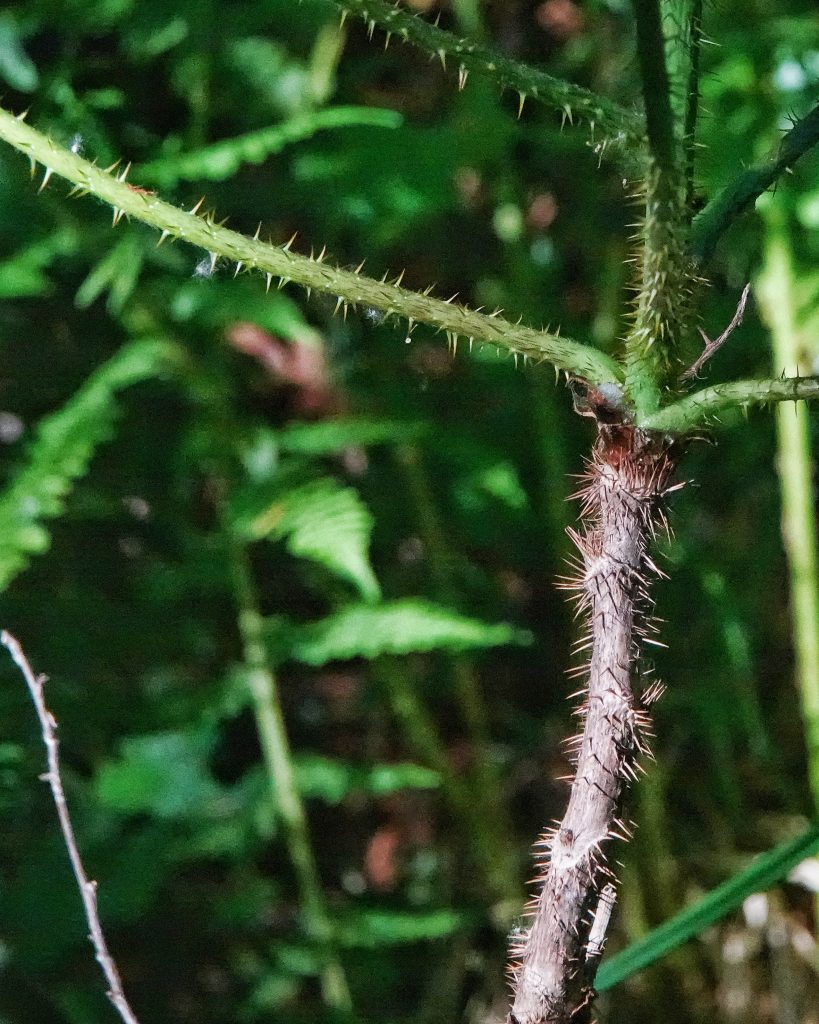
But, provided there is not a thicket of the stuff between one and one’s intended destination, devil’s club is actually strangely beautiful, with a graceful, drooping, curving form, and those huge, spiky, primordial leaves that look like they should be concealing a dinosaur, although it is thought that the family Araliaceae (which also includes ginseng and the ivies) arose soon (geologically speaking) after the mass extinction event that took out the dinosaurs. Plants that can make you bleed merely by brushing up against them are somehow attractive in their dangerousness, a look-but-don’t-touch element not completely unlike the airbrushed paint job on a biker’s Harley.
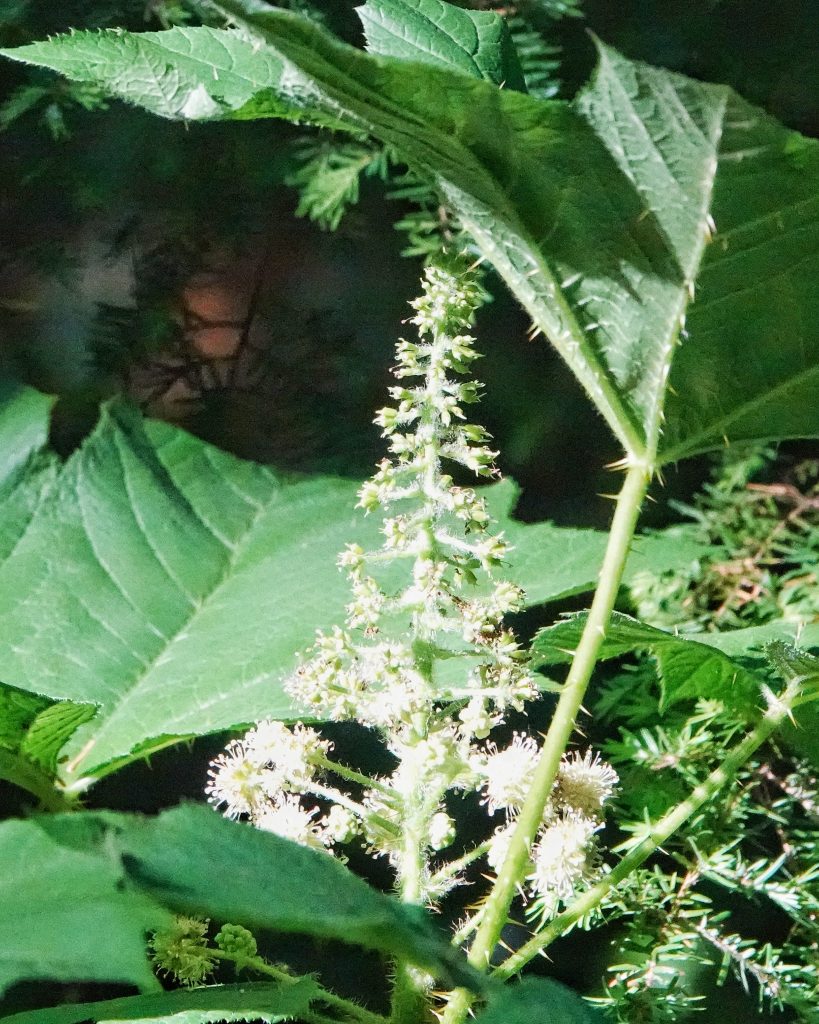
The common name devil’s club is apparently not a reference to this plant’s spikiness, but refers instead, according to OregonFlora Oplopanax horridus, the white flowers “eventually maturing into the red-fruited “devil’s club”.” Another interesting oddity is that this plant has a similar range to another native shrub I recently profiled, Ceanothus sanguineus , with both of them having the bulk of their populations between the Rockies and the Pacific, with disjunct populations around the Great Lakes.
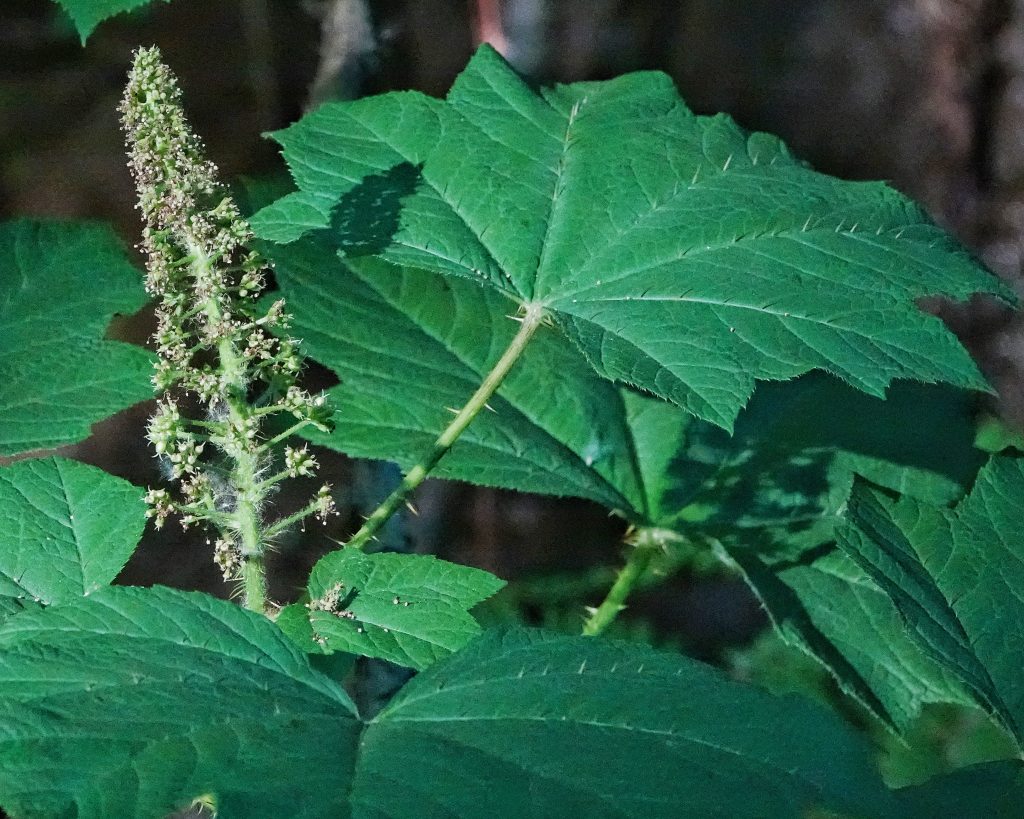
Ethnobotany– “Many Pacific Northwest tribes (including the Bella Coola, Cowlitz, Gitksan, Nlaka’pamux, and others) have taken a decoction of bark and stems to treat rheumatism, arthritis, and influenza, used as a diuretic, tonic, eyewash for cataracts, and as a laxative. The young spring buds have been eaten as a food source (boiled). An infusion of bark has been taken as a cold remedy, an analgesic, and treatment for bone ailments. An infusion of roots or whole plant has been taken as a cold remedy, tuberculosis remedy, and ulcer treatment. A poultice of bark has been used as a boil and ulcer treatment, skin wash, and used to treat wounds, diabetes, lung hemorrhage, and bronchitis. The root bark has been chewed as a purgative. The stems have been used as a blood purifier, treatment for swollen areas on the body, and provide relief from indigestion and stomach ailments. The inner bark has been used as an emetic, a purgative, a cough remedy, as relief for stomach cramps, and ceremonially during pre-hunting purification rituals. A poultice of bark scrapings has been applied to relieve pain. The berries have been mashed and used as a head lice treatment. Dried bark has been used as a deodorant. The plant has been made into black or reddish-brown face paint used by warriors, and used to color basket materials and other objects. The bark and plant has been used as a good-luck charm, source of magical powers, to cleanse areas where deaths have occurred, and as an analgesic in the steam bath. The wood has been made into fishing lures. The spiny stems have been used as protective charms.” Washington Native Plant Society entry for Oplopanax horridus ; See also the 157 entries for this plant on BRIT – Native American Ethnobotany Database, as well as modern scientific studies analyzing possible medicinal uses for this plant at Oplopanax horridus: Phytochemistry and Pharmacological Diversity and Structure-Activity Relationship on Anticancer Effects – PMC and Chemical and pharmacological studies of Oplopanax horridus, a North American botanical – PMC
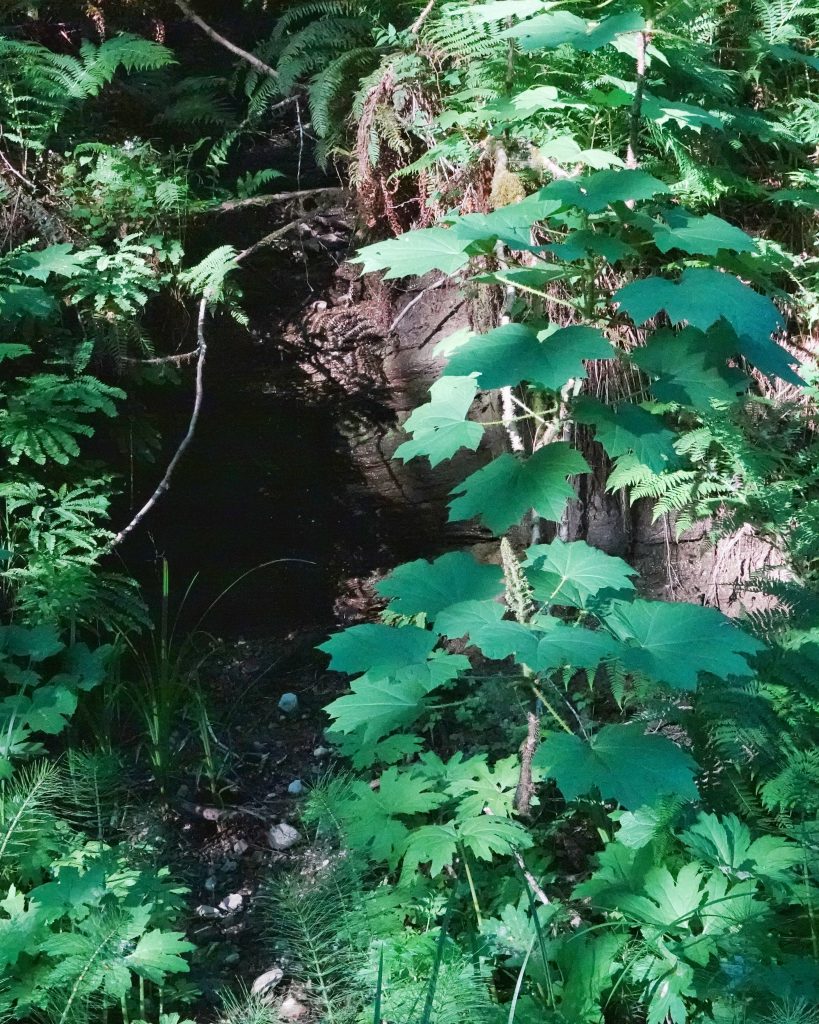
Description– “Stems densely armed with long yellow prickles, often decumbent at base, generally upright, 1–4 m. Leaves alternate; blades palmately 5(13)-lobed, 1–4 dm wide, margins serrate, veins prickly; stipulate. Inflorescences terminal, compact umbels arranged in elongate panicles or racemes. Flowers perfect; sepals 5; petals 5, green or greenish white; ovaries inferior, styles 2. Fruits flattened, 5–8 mm, red, shiny. Seeds 2–3. OregonFlora Oplopanax horridus
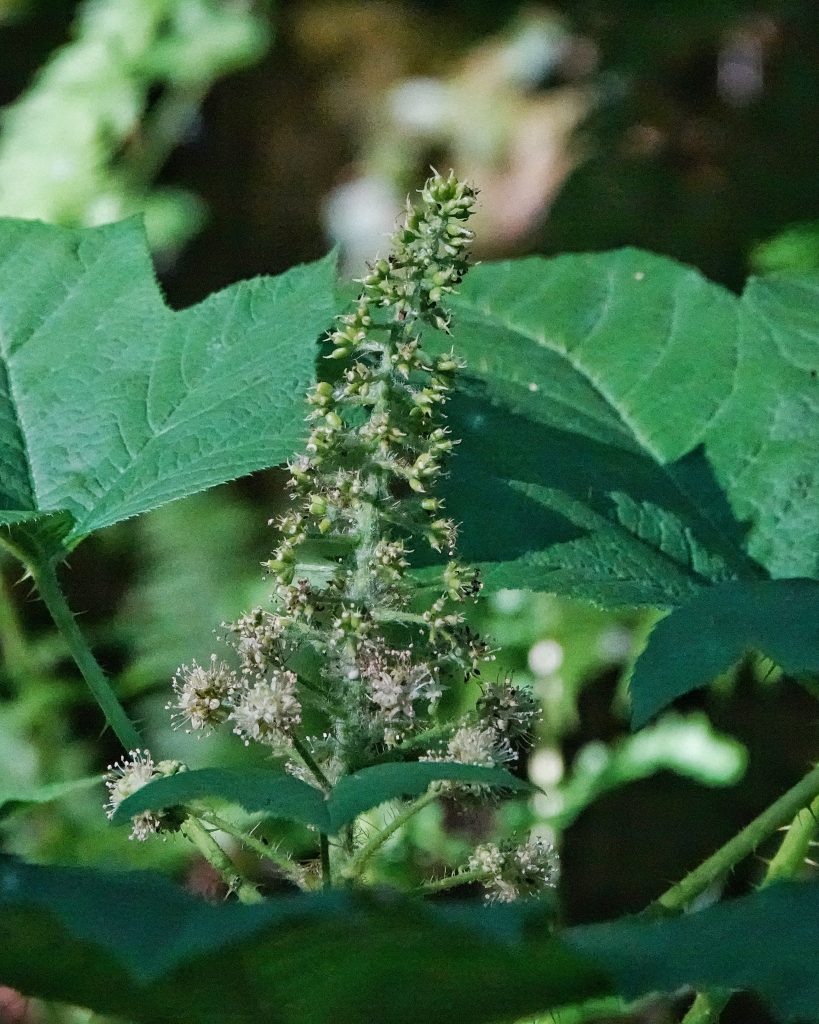
Similar species– Though the leaves are rather like a big-leaf maple, up close there is simply nothing else in our region that can be confused with devil’s club.
Reproductive timing– “Bloom time: May-July; Fruit ripens: June-August, persisting over winter.” Devil’s Club, Oplopanax horridus | Native Plants PNW
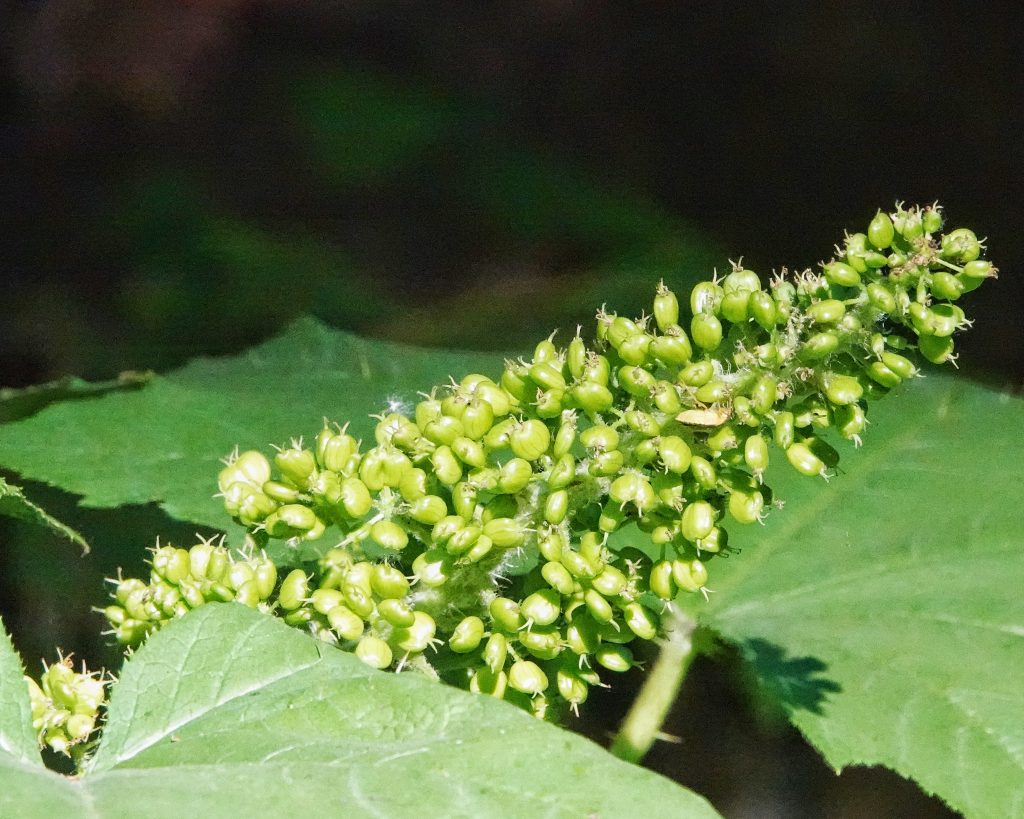
Habitat– “Devil’s club is found in cool, shady, and moist or wet areas such as damp forests and along streams. It likes nitrogen-rich soils, and generally is restricted to low or subalpine elevations. It can be the dominant plant in some areas.” Devil’s club (Oplopanax horridus) – Biodiversity of the Central Coast
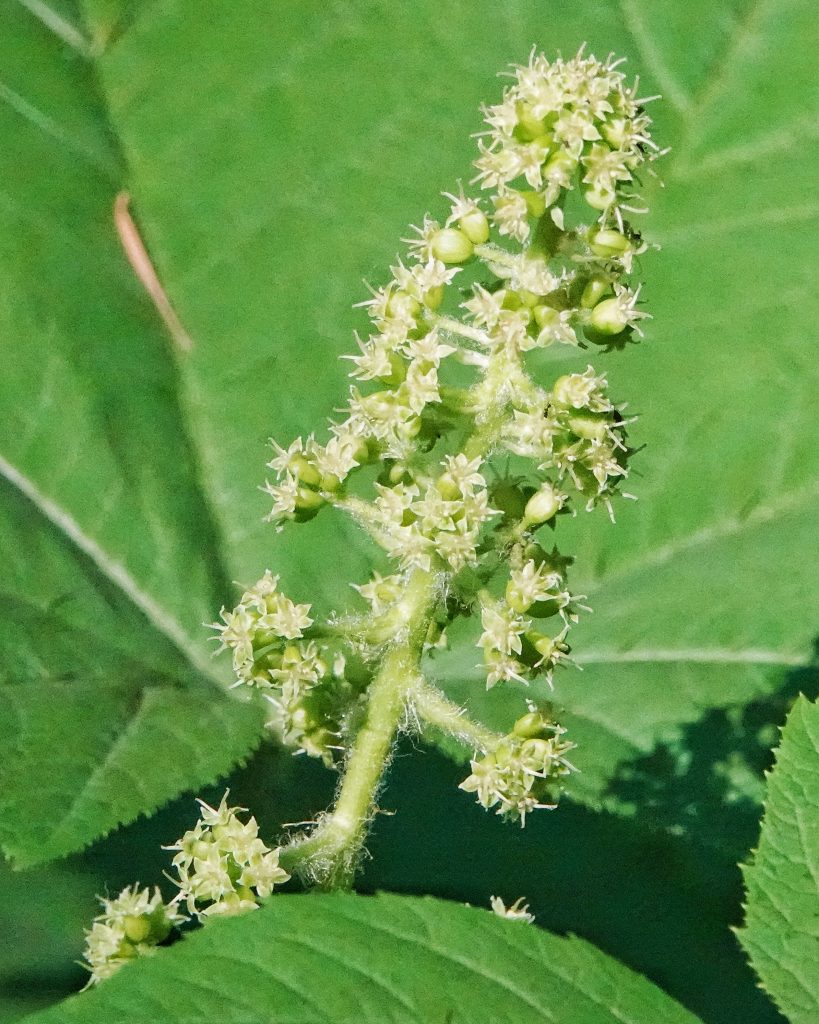
Range– “Its range covers almost all of BC, and continues northward into parts of Alaska and the Yukon Territory, eastward into Alberta, and southward into Washington and Oregon, and Montana. It has also been found sporadically in areas of Ontario and Michigan.” Devil’s club (Oplopanax horridus) – Biodiversity of the Central Coast
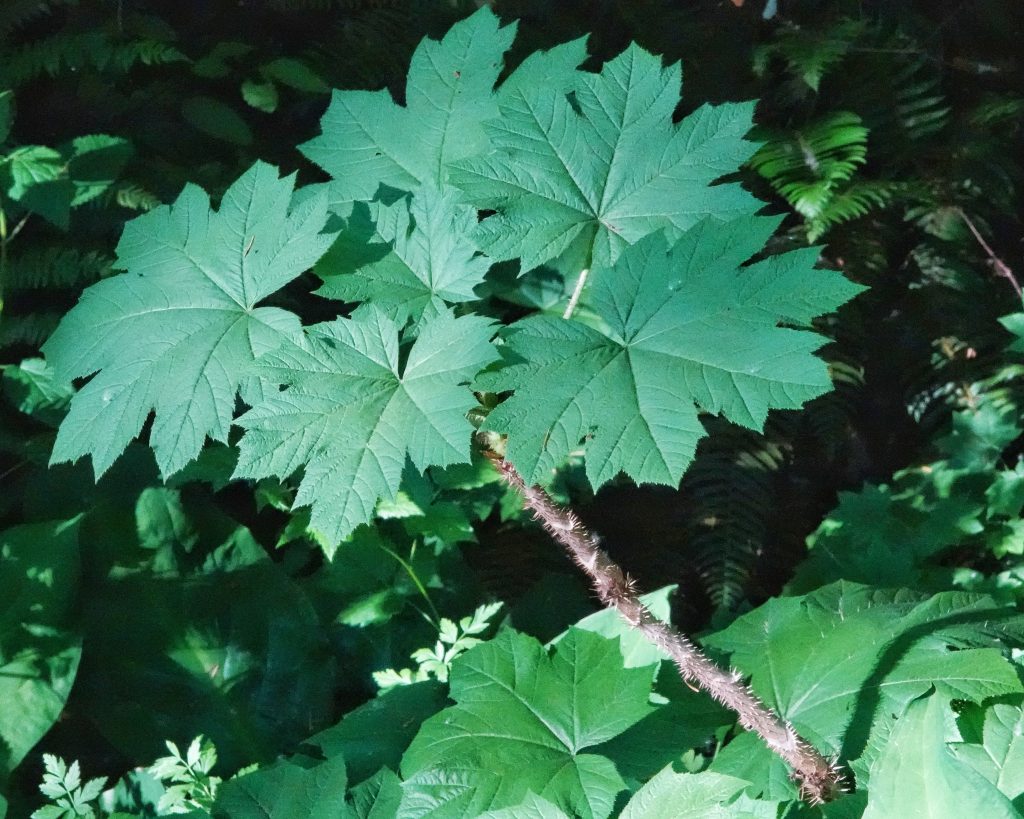
Eaten by– “Bears delight in eating large quantities of the abundant berries produced by devil’s club in the mid-summer months. They spread the seed in their droppings, helping the forest recover from natural and human disturbance, including landslides, blowdowns, and logging.” Tom Heutte’s entry of the Forest Service’s Plant of the Week site for Devil’s Club. ; “Deer and elk may browse Devil’s club lightly in spring and summer.” Devil’s Club, Oplopanax horridus | Native Plants PNW ; “Devil’s club leaves are eaten by slugs and the fruits are eaten by bears.” Portland State University entry for Oplopanax horridus – Devil’s club ; oddly I can find no information at all about potential insect use of this plant.

Etymology of names– “The genus name, Oplopanax, is derived from [Greek] hoplon, meaning weapon and [Greek] panakos meaning panacea or “all-heal”—referring to the medicinal qualities of these shrubs and their relationship to the well-known Asian herb, Ginseng, Panax ginseng….Both the common name and specific epithet, horridus [from Latin] refer to its spiny, wicked-looking appearance.” Devil’s Club, Oplopanax horridus | Native Plants PNW ; according to Erna Gunther’s “Ethnobotany of Western Washington” (1945) here are the names applied to this plant by some of the indigenous tribes of the region: Cowlitz- sqaipqa’ipas, Green River- xaxadī’a’ts, Klallam- pōkltc, Lummi- qwu’n’numpl, Swinomish and Skagit- xadī’ats, Snuqualmi- tcitca’tcilu’i.
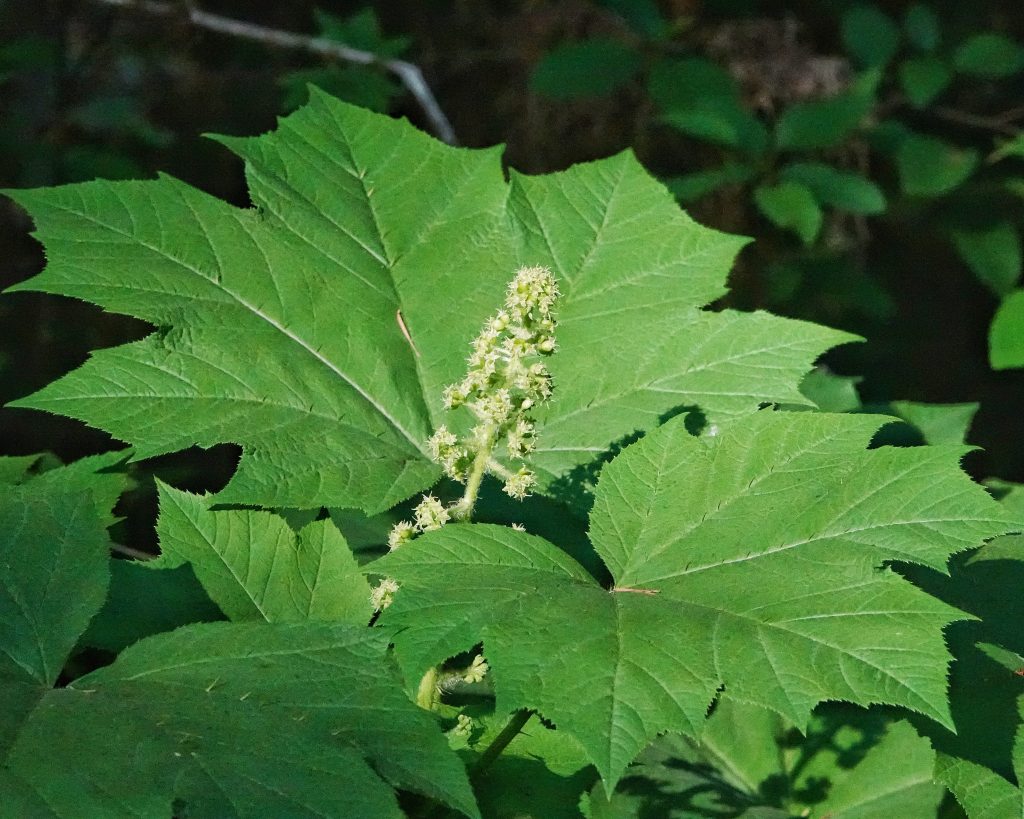
Devil’s Club, Oplopanax horridus | Native Plants PNW
Devil’s club (Oplopanax horridus) – Biodiversity of the Central Coast
BRIT – Native American Ethnobotany Database
OregonFlora Oplopanax horridus
Oplopanax horridus – Burke Herbarium Image Collection
Oplopanax horridus | Devil’s Club | Wildflowers of the Pacific Northwest
https://en.wikipedia.org/wiki/Devil%27s_club
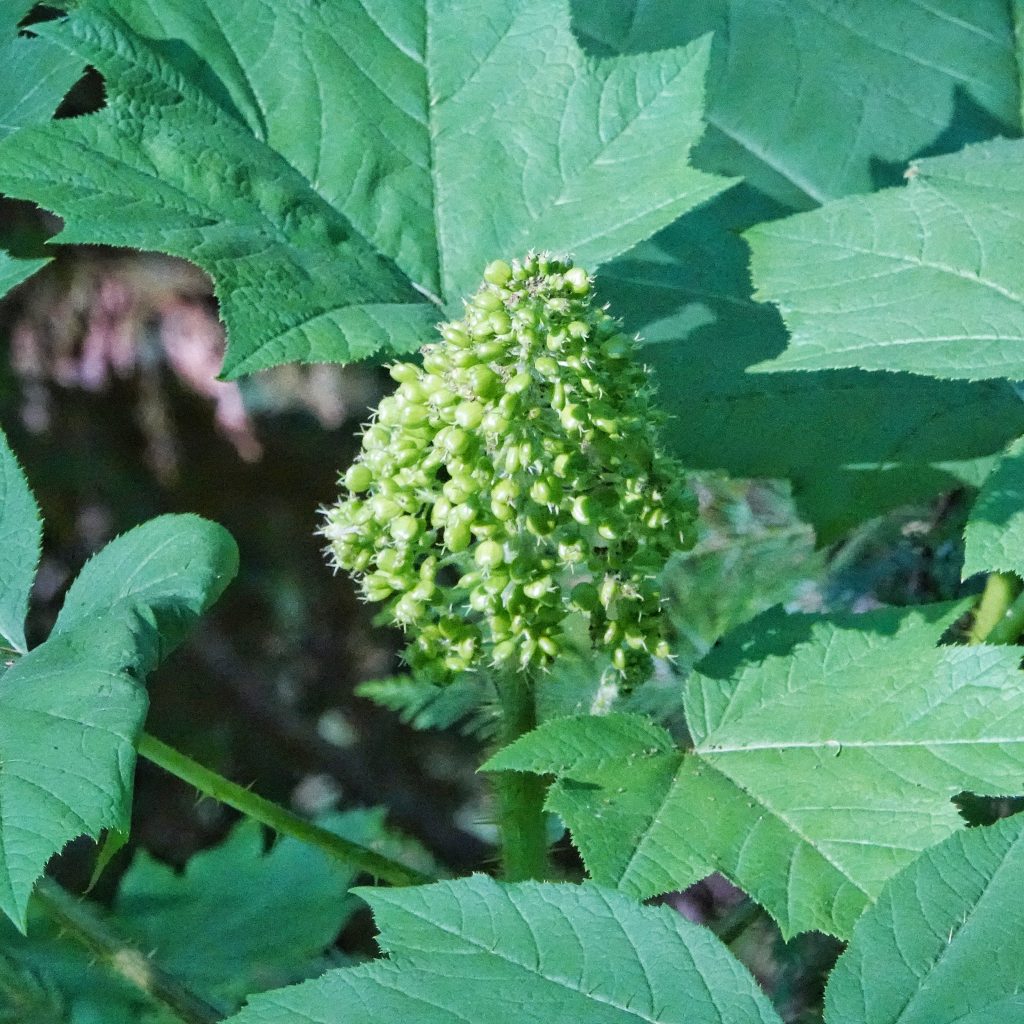
A great modern use for this plant is concealing equipment on long term deployment for stream monitoring and such. Nobody will go crawling under these plants to mess with dataloggers 🙂
Very cool!